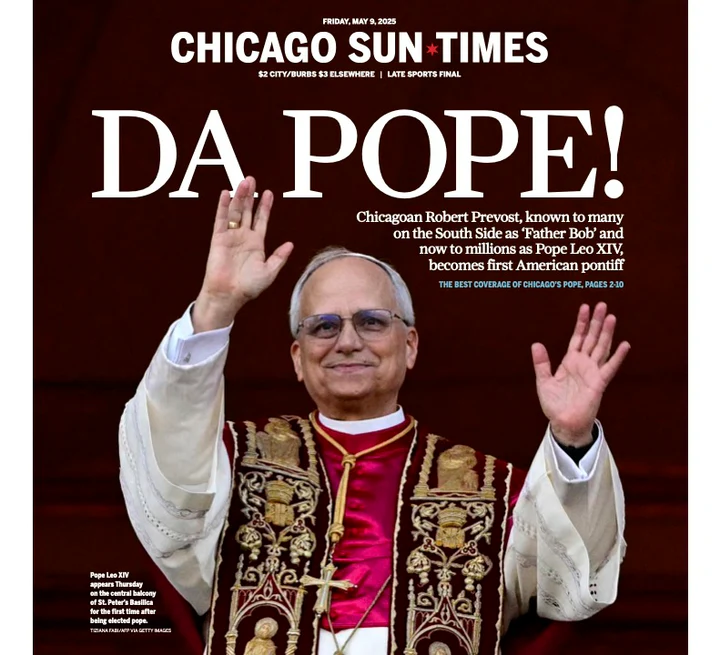Leo XIV Has Africa in His Roots, Publication Says
Story of Black Mom’s Tragedy Helps Win Pulitzer
. . . Pulitzers Honor Chuck Stone, Inquirer Joins In
. . . Upstart Wins in Linking Fentanyl Toll, Black Men
NABJ’s Award for Foreign Journalist a Puzzler
Judge Rejects White Man’s Race Bias Claim Against CBS
‘Sinners’ Reviews Make Case for Media Diversity
J-Fellows Picked for Next Classes; Diversity Touted
Linda Lockhart Dies, Committed to Craft, NABJ
Clarence O. Smith, Co-Founder of Essence, Was 92
Trump Attacks Law Boosting Web Access to Needy
Film Makers Say They Identified Journalist’s Killer
Short Takes: Lester Holt; imprisoned Tufts University student; David Plazas; Kenneth Walker; Stephen A, Smith; Philip Lewis and Washington Association of Black Journalists; Amanda Barrett; Colorado’s disproportionately Black victims of police gun violence; does countering antisemitism violate free speech?; Malcolm X 100th year commemoration; Edward and Akua Enninful.
Homepage photo: Front page of the Chicago Sun-Times for May 9, 2025, available on a T-shirt, tote bag or coffee mug, or as a framed print.
.
Support Journal-ismsDonations are tax-deductible
The Black Catholic Messenger reported that Pope Leo XIV, shown on the first day of his papacy, is “the first Roman pontiff of African ancestry since Pope St. Gelasius I, who died in 496 and was of Berber origin.” (Credit: YouTube)
Leo XIV Has Africa in His Roots, Publication Says
“The Catholic Church has a new leader, with the Augustinian cardinal Robert Prevost elected as Pope Leo XIV, his chosen name as Bishop of Rome. He is the first American pope and the first of African descent since the fifth century,” Nate Tinner-Williams, co-founder of the Black Catholic Messenger, reported Thursday from Vatican City.
The publication’s linkage of the new pope with African roots, however tenuous, was soon followed by other media including the New York Times and Forbes.
Tinner-Williams continued, “The understated candidate triumphed on the second day of voting in a count kfolloept under permanent Vatican seal. The results were announced with white smoke in St. Peter’s Square Thursday evening, with the new pope making his first appearance to a crowd of more than a hundred thousand from the balcony of St. Peter’s Basilica.
“ ‘Thank you to my cardinal brothers who chose me to be the successor of Peter and to walk together with you as a united Church searching all together for peace and justice,’ the 69-year-old Chicago native said in a bilingual (Italian and Spanish) address that included odes of thanks to his predecessor, Pope Francis.
“ ‘We have to look together how to be a missionary Church, building bridges, dialogue, always open to receiving with open arms for everyone, like this square, open to all, to all who need our charity, our presence, dialogue, love.’
“ A member of a religious order named for the famous African saint Augustine of Hippo (depicted above), Pope Leo XIV is also the first Roman pontiff of African ancestry since Pope St. Gelasius I (depicted below), who died in 496 and was of Berber origin.
A member of a religious order named for the famous African saint Augustine of Hippo (depicted above), Pope Leo XIV is also the first Roman pontiff of African ancestry since Pope St. Gelasius I (depicted below), who died in 496 and was of Berber origin.
 “Multiple genealogists, including the Louisiana Creole expert Jari Honora . . . traced Prevost’s ancestry to the Black community of New Orleans. His maternal ancestors lived in the Crescent City before migrating to Chicago in the early 20th century.
“Multiple genealogists, including the Louisiana Creole expert Jari Honora . . . traced Prevost’s ancestry to the Black community of New Orleans. His maternal ancestors lived in the Crescent City before migrating to Chicago in the early 20th century.
“Leo XIV is not known to have publicly commented on his African ancestry, which is part of a mixed heritage that also includes French, Italian, and Spanish roots. According to the U.S. Census, Prevost’s mother, the late Mildred Martinez, was the mixed-race daughter of Black property owners, the Haitian-born Joseph Martinez and New Orleans native Louise Baquié, a Creole.
” ‘As such, Leo XIV could be considered the first Black pope in the history of the Catholic Church, though it is unclear how he identifies racially.
“ ‘It’s more complicated than that,’ Honora told BCM. ‘I think that a person can be of Black ancestry or have Black roots, but to identify as Black, I think, is all about the lived experience.’ ”
In New Orleans, Rep. Troy A. Carter Sr. picked up on the theme, saying in a statement, “The news that the first American Pope has roots here in New Orleans, with ancestral ties to our Creole and Haitian families, is nothing short of extraordinary. It reminds the world that greatness rises from every corner — including communities that history has too often overlooked or underestimated.”
- Jack Brook and Deepa Bharath, Associated Press: Pope Leo XIV’s Creole heritage highlights complex history of racism and the church in America
- Emmanuel Felton, Rachel Hatzipanagos and Vivian Ho, Washington Post: Pope Leo XIV’s Creole ancestry uncovered
- Julia Guilbeau, NOLA.com: Black, Creole, 7th Ward Louisianans celebrate the pope’s New Orleans lineage: ‘So dope’
- Nicholas Reimann and Molly Bohannon, Forbes: Pope Leo XIV’s Ancestry Celebrated: Congressman, Genealogist Tout Possible Creole, Black Roots
- Nate Tinner-Williams, Black Catholic Messenger: Meet the Black American [Journalist] who read at Pope Francis’ funeral.
- Nate Tinner-Williams, Black Catholic Messenger: Amid conclave, Black Catholic theologians remember Pope Francis, look to future
- María Verza, Associated Press: Indigenous Catholics hope the next pope shares Francis’ approach to Native people
This ad from the 2024 presidential campaign featuring Amber Nicole Thurman and her son, Messiah, is captioned, “Help Vice President Kamala Harris and Governor Tim Walz put policies in place that protect our fundamental freedoms and defeat Donald Trump and MAGA Republicans this election.” (Credit: YouTube)
Story of Black Mom’s Tragedy Helps Win Pulitzer
“In her final hours, Amber Nicole Thurman suffered from a grave infection that her suburban Atlanta hospital was well-equipped to treat,” began a Pulitzer Prize-winning story for ProPublica, cited Monday as the prizes were announced.
“She’d taken abortion pills and encountered a rare complication; she had not expelled all of the fetal tissue from her body. She showed up at Piedmont Henry Hospital in need of a routine procedure to clear it from her uterus, called a dilation and curettage, or D&C.
“But just that summer, her state had made performing the procedure a felony, with few exceptions. Any doctor who violated the new Georgia law could be prosecuted and face up to a decade in prison.
“Thurman waited in pain in a hospital bed, worried about what would happen to her 6-year-old son, as doctors monitored her infection spreading, her blood pressure sinking and her organs beginning to fail.
“It took 20 hours for doctors to finally operate. By then, it was too late. . . .”
The “urgent reporting” by Kavitha Surana, Lizzie Presser, Cassandra Jaramillo and Stacy Kranitz about “pregnant women who died after doctors delayed urgently needed care for fear of violating vague ‘life of the mother’ exceptions in states with strict abortion laws” won the top prize, the public service award.
It was the first in a series on the subject cited by the Pulitzer board, and Thurman’s story was seized upon by then-Vice President Kamala Harris in her quest for the presidency as the Democratic nominee.
- Kylie Cheung, Jezebel: ProPublica Wins Pulitzer for Reporting on Deaths Caused by Abortion Bans
- Kelli Keane and Cassy Cooke, Live Action: ProPublica’s Pulitzer award proves that poor journalism can win if it has the preferred agenda
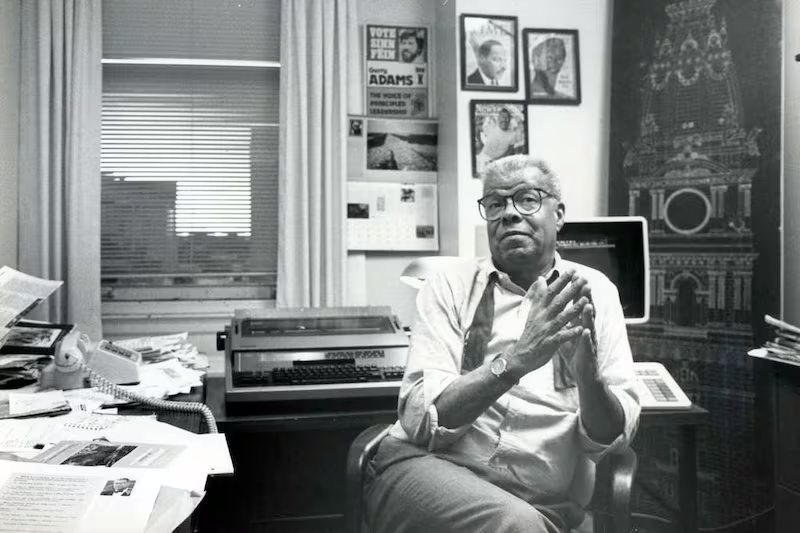
Longtime Philadelphia Daily News columnist Chuck Stone in his office shortly before leaving the newspaper in 1991. He has been posthumously honored with a special citation from the Pulitzer Board. (Credit: Philadelphia Inquirer)
. . . Pulitzers Honor Chuck Stone, Inquirer Joins In
“Once called the ‘most influential journalist in Philadelphia,’ the late Chuck Stone was a legendary figure first to his readers, then to fellow Black journalists and later to college students, across a storied career,” Jennifer Orsi wrote Monday for the Philadelphia Inquirer.
“On Monday, the Pulitzer Prize Board awarded him a special citation ‘for his groundbreaking work as a journalist covering the Civil Rights Movement, his pioneering role as the first Black columnist at the Philadelphia Daily News — later syndicated to nearly 100 publications — and for co-founding the National Association of Black Journalists 50 years ago.’
“Stone, who was a Tuskegee Airman in World War II and a professor at the University of North Carolina later in his career, was known for his sartorial style and bow ties. He also became known for having more than 70 suspects turn themselves in to him — later to be surrendered to police — over his nearly 20 years as a columnist and senior editor at the Daily News.”
The Inquirer, sister paper to the Philadelphia Daily News, where Stone’s columns appeared, posted several of his columns.
Kevin Merida, former editor of the Los Angeles Times and a Pulitzer board member, wrote on Facebook, “In 2020, during the height of Covid, I was surprised and honored to receive the Chuck Stone Lifetime Achievement Award from the National Association of Black Journalists.
“To receive the award during a time of uncertainty and fear, with the only celebration being a virtual one from my dining room, made it all the more meaningful. It reminded me of Chuck’s fierceness and his unwillingness to be deterred by any force. I did not know him well, but I was a beneficiary of his wisdom and care. That this citation is being given to an NABJ founder as the association celebrates its 50th anniversary is poetic.
“Here’s to Chuck, and to all of this year’s winners of the Pulitzer Prize.”
The legacy of Stone, who died in 2014 at age 89, continues to resonate. “We just spent the past weekend celebrating ABJ and NABJ founders,” Michael Days, president of NABJ-Philadelphia, told Journal-isms, referring to the original Philadelphia-based Association of Black Journalists, which predated NABJ. “As the first president of both the local and National organization Chuck was mentioned constantly.”

Reporter Alissa Zhu, center left, and photojournalist Jessica Gallagher, center right, celebrate with the Baltimore Banner newsroom Monday as they learn they’ve won the Pulitzer Prize for Local Reporting. (Credit: Ariel Zambelich/Baltimore Banner)
. . . Upstart Wins in Linking Fentanyl Toll, Black Men
In the contest for the local reporting prize, Alissa Zhu, Nick Thieme and Jessica Gallagher of the Baltimore Banner and The New York Times won, the Pulitzer board said, for “a compassionate investigative series that captured the breathtaking dimensions of Baltimore’s fentanyl crisis and its disproportionate impact on older Black men, creating a sophisticated statistical model that The Banner shared with other newsrooms.“
Cody Boteler wrote for the Banner, a nonprofit multicultural startup, that the three reporters “worked for nearly two years. They pieced together chilling patterns from reams of previously shielded records, and hit the streets to tell the stories of those addicted to opioids and those who’ve lost family and friends. The project was done in collaboration with The New York Times Local Investigations Fellowship.
“ ‘Less than three years after The Banner’s launch, our team is extraordinarily honored to accept the organization’s first Pulitzer Prize,’ Zhu said. ‘We are even more honored to see the information we brought to light is now helping shape new conversations, policies and programs to tackle overdoses in our city and state. There’s so much work ahead to be done.’
” ‘A deep look at drug overdoses was among the most ambitious early ideas at The Banner as editors recognized that a crisis killing thousands of people in the city annually was going underreported — and overlooked.’ “
“Press Freedom in Black-Run Countries” was the topic of a Journal-isms Roundtable on Aug, 1, 2024, in Chicago, hosted by Chicago Public Media after the National Association of Black Journalists rejected the idea for its convention, held in that city. (Roundtable starts at 9:00) (Credit: YouTube)
NABJ’s Award for Foreign Journalist a Puzzler
When World Press Freedom Day was commemorated last Saturday, Erick Oduor, secretary general of the Kenya Union of Journalists, said “the occasion was a time to reflect on the gains made in press freedom and the difficulties still facing journalists.
” ‘We gather here to reflect on the state of the media as we mark this year’s World Press Freedom Day. It’s a day we look at the milestones the Fourth Estate has made over the past year and challenges the sector is facing,’ he said.
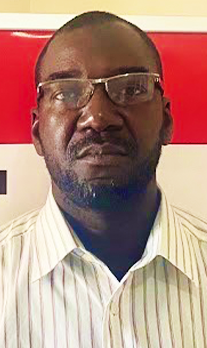 Reporters Without Borders produced its annual press freedom index in conjunction with the commemoration. Sanibou Marong (pictured), director of the group’s West Africa bureau, told a University of Southern California forum on Monday, “seven African countries are now at the bottom of the index.”
Reporters Without Borders produced its annual press freedom index in conjunction with the commemoration. Sanibou Marong (pictured), director of the group’s West Africa bureau, told a University of Southern California forum on Monday, “seven African countries are now at the bottom of the index.”
Honoring those confronting these continuing difficulties was a prime reason the National Association of Black Journalists in 1988 created the Percy Qoboza Award, inaugurated the next year as South Africa was seeking its independence and journalists were on the front line in places where freedom of the press was at best a dream. The first winner, Zwelakhe Sisulu, was honored in absentia, imprisoned for writings that condemned apartheid.
“As much as Percy Qoboza (editor of The World, 1964-1977) was an outspoken critic of the apartheid regime, he functioned under very strict white editorial control,” South African writer Sandile Memela wrote in 2016 for South Africa’s Sunday Independent.
“When The World was banned in 1977, only to be resurrected as the Post in 1981, Qoboza was forced to resign for being ‘uncontrollable’. But he was a black liberal who knew how to ‘work within the system’.
“But it is not incorrect to say he epitomised a new phenomenon of growing Struggle consciousness among young and courageous journalists who were banned or imprisoned such as Phil Mthimkhulu, Zwelakhe Sisulu, Mathatha Tsedu, Joe Tlholoe, Thami Mazwai and Aggrey Klaaste.”
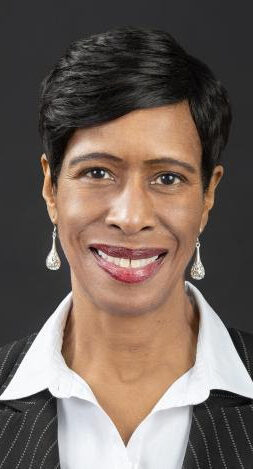 Hence the head-scratching that took place Wednesday when the National Association of Black Journalists announced its special honors and Hall of Fame inductees. The Percy Qoboza Award winner was Ann M. Simmons (pictured), whose reporting on Russia for the Wall Street Journal, and before that, the Los Angeles Times, is widely admired. Like other Western reporters, Simmons was forced to leave Russia for her own safety after the 2023 arrest of Evan Gershkovich, her since-freed Journal colleague who was believed to be the first American reporter held on spying charges in Russia.
Hence the head-scratching that took place Wednesday when the National Association of Black Journalists announced its special honors and Hall of Fame inductees. The Percy Qoboza Award winner was Ann M. Simmons (pictured), whose reporting on Russia for the Wall Street Journal, and before that, the Los Angeles Times, is widely admired. Like other Western reporters, Simmons was forced to leave Russia for her own safety after the 2023 arrest of Evan Gershkovich, her since-freed Journal colleague who was believed to be the first American reporter held on spying charges in Russia.
Today, Simmons messaged Journal-isms from England, she has left the Journal after being a spring 2025 fellow at the Institute of Politics at Harvard University’s Kennedy School of Government. A dual U.S,-British citizen, she is so well-liked that journalists who provided background for this column item did not want to be quoted by name for fear of appearing to be criticizing her.
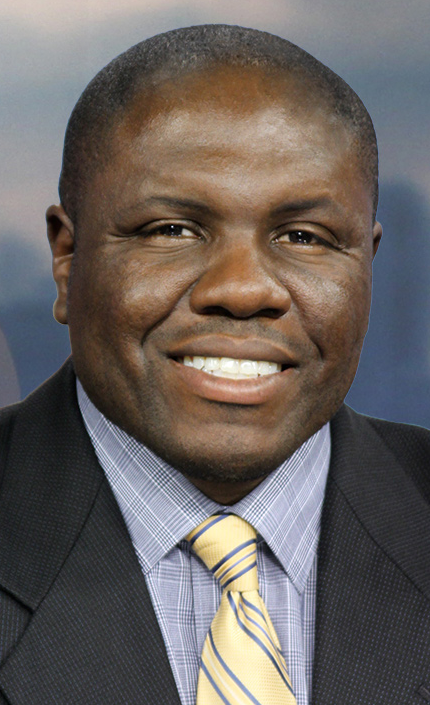 The issue was whether the Qoboza award was the right way to honor her. Asked whether the board had changed the criteria for the award, NABJ President Ken Lemon (pictured) messaged, “Ann is born and raised in the UK and for the selection period worked in Russia.”
The issue was whether the Qoboza award was the right way to honor her. Asked whether the board had changed the criteria for the award, NABJ President Ken Lemon (pictured) messaged, “Ann is born and raised in the UK and for the selection period worked in Russia.”
Lemon did not respond when asked how that squares with the criteria, as expressed in describing the honor, “This award recognizes a foreign journalist who has done extraordinary work while overcoming tremendous obstacles that contribute to the enrichment, understanding, or advancement of people or issues in the African Diaspora. “
Past winners of the award, according to Wikipedia, include “Imprisoned Journalists of Eritrea” in 2008, and exiled Haitian journalist Roberson Alphonse in 2024, when he told the Journal-isms Roundtable that he was still wounded from the violence in that country when he arrived inthe United States, “We did deep-dive journalism to help protect press freedom,” Alphonse said.
Lynette Clemetson, who directs the Wallace House Center for Journalists at the University of Michigan, provided a safe haven for Alphonse at Wallace House.
“I work with journalists like Roberson, who are literally trying to write with their hands in bandages, and I think sometimes journalists don’t realize, even in the face of, of course, all of the pressures that we have here [that] being asked to go back to your office and work in person is like not a real hardship compared to being shot at. . . .,” Clemetson said.
Djibril Diallo, president & CEO of the African Renaissance and Diaspora Network Inc., and longtime friend of NABJ, defended the association’s choice and messaged:
“Yes, I knew Percy Qoboza and he was a bold and principled journalist whose legacy continues to inspire those of us committed to justice and the power of the press.
“As you know, the NABJ’s Percy Qoboza Foreign Journalist Award honors reporters whose work, often under challenging conditions, advances understanding and engagement around issues affecting Africa and the Diaspora.
“I understand that this year’s award was presented to Ann Simmons, a distinguished journalist currently with The Wall Street Journal, known for her coverage of Russia. [Simmons’ departure had not been made public.]
“While her recent focus is not on Africa or the Diaspora, she has a strong record of earlier reporting across the African continent, as bureau chief in Nairobi and Johannesburg for the Los Angeles Times, and through her coverage of African and Afro-descendant communities in Russia.
“Given that context, I can appreciate the rationale for her selection. At the same time, I welcome continued conversations like this to ensure the award remains closely aligned with the legacy it was created to honor.”
Simmons’ Africa coverage for the Los Angeles Times took place from 1997 to 2002.

The special honors go to:
- Angelo B. Henderson Community Service Award — Eric Brian Sellers
- Chuck Stone Lifetime Achievement Award — Art Holliday
- Ida B. Wells Award — Amanda Barrett
- Journalism Educator of the Year Award — Dr. Yanick Rice Lamb
- Journalist of Distinction Award — Kim Gusby
- Journalist of the Year Award — Astead W. Herndon
- Legacy Award (posthumously) — Rev. Dr. Timothy Lamar Tooten, Sr.
- Michael J. Feeney Emerging Journalist of the Year Award — Tiana Woodard
- Patricia L. Tobin Media Professional Award — Alexis N. Johnson
- Student Journalist of the Year Award — Jacky Dennis Jean-Jacques II
- Percy Qoboza Foreign Journalist of the Year Award — Ann M. Simmons
- Professional Chapter of the Year Award Finalists — NABJ-South Florida, Colorado Association of Black Journalists and NABJ-St. Louis
- Student Chapter of the Year Award Finalists — NABJ North Carolina A&T State University, Carolina Association of Black Journalists University of North Carolina at Chapel Hill and Louisiana State University Association of Black Journalists
- Hall of Fame Honorees are Callie Crossley, Pam Moore, Gregory L. Moore, Leon H. Carter, Cecil Williams, Bob Reid, Leon D. Bibb and Wayne Dawson.
Judge Rejects White Man’s Race Bias Claim Against CBS
“For the past year, CBS has been the target of a legal campaign claiming that its efforts to diversify its workforce amounted to discrimination against white men,” Eriq Gardner reported Tuesday for Puck.
“The suits come courtesy of America First Legal Foundation, the conservative legal machine chaired by [Steven] Miller, Trump’s top policy advisor. One such case, brought by SEAL Team writer Brian Beneker, was settled last month, prompting America First to declare victory in its crusade against corporate D.E.I. initiatives.
 “But several lawsuits remain. One of the more interesting cases involves Andre Rhoden (pictured), a freelance video editor who briefly worked at CBS’s local stations in Los Angeles. In 2023, he applied for a full-time publicity job in the news division. The position went to someone else — a younger Hispanic woman — and Rhoden says his freelance work soon dried up. He blamed CBS’s diversity push, which had gathered steam under CBS News leader Wendy McMahon, who took over the news and stations group in 2021 with a mandate to modernize the organization.
“But several lawsuits remain. One of the more interesting cases involves Andre Rhoden (pictured), a freelance video editor who briefly worked at CBS’s local stations in Los Angeles. In 2023, he applied for a full-time publicity job in the news division. The position went to someone else — a younger Hispanic woman — and Rhoden says his freelance work soon dried up. He blamed CBS’s diversity push, which had gathered steam under CBS News leader Wendy McMahon, who took over the news and stations group in 2021 with a mandate to modernize the organization.
“Unfortunately for Rhoden, the facts weren’t terribly cooperative. After CBS filed an anti-SLAPP motion, Judge Bruce Iwasaki reviewed the complaint to determine whether it had minimal merit. He ruled that it did not. Though Rhoden claimed a supervisor once grumbled about ‘too many white males,’ Iwasaki pointed out that Rhoden had identified himself to CBS as ‘Hispanic/Latino.’ The judge also noted that CBS’s local stations had broadly slashed contractor work in 2023, including roles held by women and minorities — hardly evidence of a targeted purge.
“In the end, only a single claim — gender discrimination — survived. CBS had argued that its First Amendment rights should shield it from such a claim, but the judge disagreed. (Here’s the ruling.) CBS also put forward the usual suite of nondiscriminatory explanations, which may yet carry the day, but for now, they’ll have to be scrutinized later in the case.
“Still, by successfully beating claims of discrimination on the basis of race, age, and military status (Rhoden was a veteran CBS has scored a clear victory. The parent company and McMahon have been dismissed too, meaning CBS is entitled to recoup its early legal fees. One assumes America First will be footing the bill — which, given the going rate for white-collar litigation in Los Angeles, will not be cheap.”
According to David Honig, founder of the Multicultural Media, Telecom and Internet Council, which works for broadcast ownership by people of color, in only one case from 1968 to 2024 has a broadcaster been found to discriminate against a white complainant, though there have been hundreds of complaints alleging anti-Black discrimination. That case was filed by a Texas radio station and adjudicated by the U.S. Equal Employment Opportunity Commission in 1982, Honig said.
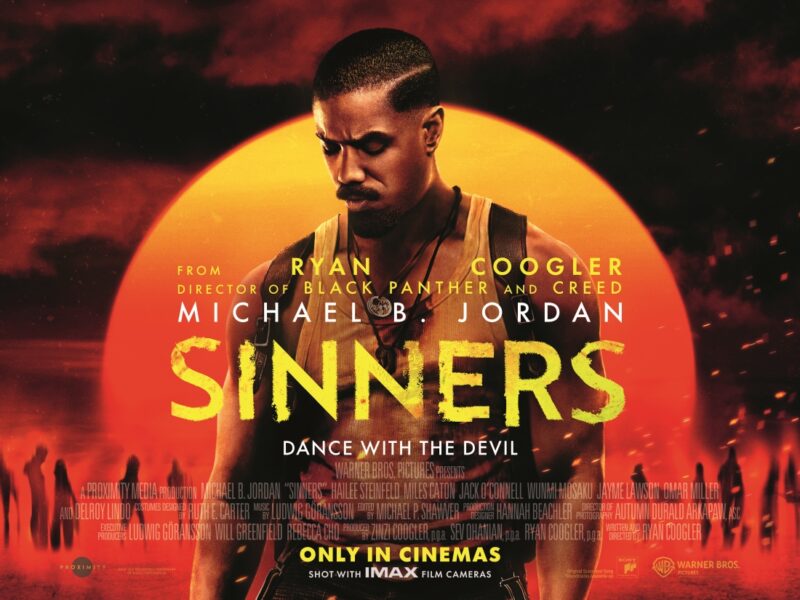
“Set in 1932 Clarksdale, Mississippi, the narrative follows twin brothers Smoke and Stack (both portrayed by Michael B. Jordan) who return from World War I and the Chicago underworld to establish a juke joint in their hometown. Their venture takes a dark turn as they confront vampiric forces that connect to their victims through music.” according to the film’s promotional material.
‘Sinners’ Reviews Make Case for Media Diversity
“When ‘Sinners’ opened to very good if not overwhelming box office numbers, the film’s performance elicited several skeptical reactions from the entertainment press,” Brian Lowry wrote Tuesday for TheWrap. “In doing so, those outlets and their industry sources might have made a case for the value of diversity, at a time when DEI efforts at media companies have come under siege by the Trump administration.
“Writer-director Ryan Coogler’s period horror film has provided a welcome spring surge for Hollywood. Yet the tentative responses to its initial results missed the enthusiasm that greeted its arrival, particularly within the Black community, which both over-indexes in terms of movie attendance and is underrepresented in media jobs.
“The coverage in outlets like Variety and the New York Times prompted anger across social media, and allegations of double standards when it comes to filmmakers of color. The subsequent discussion has also focused on blind spots in Hollywood about Coogler’s fan base and more broadly Black-centered films. . . .
“Eric Deggans, an NPR critic, Washington and Lee University journalism professor and author of the book ‘Race-Baiter: How the Media Wields Dangerous Words to Divide a Nation,’ sees the coverage as emblematic of both the current media climate and reporters channeling what they hear from their studio sources.
“Simply put, both sides of that equation were ill-equipped to see around corners with a film that hasn’t followed the traditional horror-movie box-office script.
“ ‘There’s a lot of pressure in the platforms who cover Hollywood to anticipate what is going to happen,’ Deggans told TheWrap, adding that they often approach industry news ‘completely from the perspective of people who run studios. They are not thinking about what the audience is thinking, specifically if it’s a non-traditional audience.’ . . .”
- Sonny Bunch, the Bulwark: ‘Sinners’ Review
- Eric Deggans, Substack: Why “Sinners” is the argument for DEI Hollywood needs (April 29)
- Jeroslyn JoVonn, Black Enterprise: Clarksdale, Mississippi, Inspired ‘Sinners,’ Now Residents Petition For A Screening In A Town With No Open Theater
- Pamela McClintock, Hollywood Reporter: Box Office: ‘Sinners’ Sinks Teeth Into Huge $45.7M, ‘Revenge of the Sith’ Edges Past ‘Accountant 2’
- Aallyah Wright, Capital B: ‘Sinners’ Is Set in Clarksdale, Where There’s No Theater. Locals Are Asking for a Screening.

Top row, from left: Yousur Al-Hlou, James Edwards, Irene Caselli, Ling Wei, Silvia Foster-Frau, Shaun Raviv, Jessica Glenza. Second row: Ridwan Karim Dini-Osman, Kaila Dwinell, Cindy Carcamo, Andrea Marinelli. Third row: Marcela García, Daniel Strauss, Daniel Drepper, Shany Littman. Fourth row: Sotiris Sideris, Simone Iglesias, Yao Hua Law, Suha Halifa, John Hammontree, Lisa Hagen, Wufei Yu.
J-Fellows Picked for Next Classes; Diversity Touted
“The Nieman Foundation for Journalism has selected 22 accomplished journalists from around the world as members of the class of 2026,” the Harvard University-based program announced Thursday.
“The new cohort, representing nine countries, includes reporters, editors, producers, podcasters, multimedia journalists, a news anchor, columnist, audience development manager and data editor,” an announcement said. “The fellows work for legacy newsrooms, digital outlets, national television and radio stations, investigative collaboratives and as independent journalists. . . .
“During two semesters of study at Harvard University beginning this fall, the new fellows will delve into topics including climate change, war crimes, cryptocurrency, misinformation, immigration and AI applications for newsrooms.”

Meanwhile, the John S. Knight Journalism Fellowships at Stanford University announced Tuesday it had chosen 16 journalists for the 2025-26 academic year.
“They will spend September through next May together at Stanford, pursuing individual projects as well as exploring opportunities for collective action that responds to accelerating threats to freedom of news and information.
“Ten U.S. and six international journalists comprise the new cohort. They reflect many dimensions of diversity – from their professional experiences to the sizes and types of news and journalism support organizations where they currently work to their personal backgrounds and interests. Broadly speaking, these fellows have demonstrated a commitment to doing journalism that is independent and inclusive.”
“JSK provides fellows with several benefits, including a stipend of $130,000 and Stanford health insurance for fellows, spouses and children. . . .”
The JSK fellows include Jennifer Brandel, Allison Harrera, Sebastián Hidalgo, Shiu-tung (Patrick) Lam, Dessi Lange-Damianova, Candace Mays, Asraa Mustufa, Elise Pepple, John-Allan Namu, Terry Parris Jr., Kae Petrin, Damaso Reyes, Sérgio Spagnuolo, Ramsey G. Tesdell, Eric Ulken and Veengas.
 Reyes (pictured) is executive and investigative editor at The New York Amsterdam News and founding editor of The Blacklight, its investigative unit.
Reyes (pictured) is executive and investigative editor at The New York Amsterdam News and founding editor of The Blacklight, its investigative unit.
“I’ll be studying how to increase investigative capacity and reporting at ethnic and community news organizations,” Reyes messaged Journal-isms.
Publisher Elinor Tatum said, “We are so excited for this opportunity for Damaso. We will be doing a search for a new executive editor.”

“Over the course of the academic year, the Knight-Wallace Journalism Fellows will pursue ambitious projects exploring pressing issues including climate change and migration; political and institutional mistrust; equity and access in housing and healthcare; and community-engaged journalism,” the program said,
On Friday, The Wallace House at the University of Michigan announced its choices for its next class of 18 Knight-Wallace Fellows, from eight countries and across the United States.
“At a time when both journalism and higher education are facing unprecedented challenges, our mission to provide accomplished journalists the time and support to focus on in-depth inquiry is especially clear and vital,” Lynette Clemetson, director of Wallace House, said in an announcement.
“It can be difficult in moments of great tumult to pull up and seek perspective. And yet it is essential, alongside our more immediate responses. We are privileged to provide our Fellows with the resources to explore complex, broad-ranging issues. The benefits of their pursuits will extend long term to the communities and audiences they seek to reach.”
The 2025-2026 Fellows are Tim Alberta, David de Jong, Ismail Einashe, Heidi Groover, Katelyn Harrop, Elizabeth Jensen, Hyeonjun Lee, Ashish Malhotra, Rosem Morton, Brittany Moseley, Tenzin Pema, Nidhi Prakash, Clavel Rangel Jimenez, Irene Romulo, Simone Sebastian, Jędrzej Slodkowski, Sarah Souli and Nina Weingrill.
Linda Lockhart Dies, Committed to Craft, NABJ
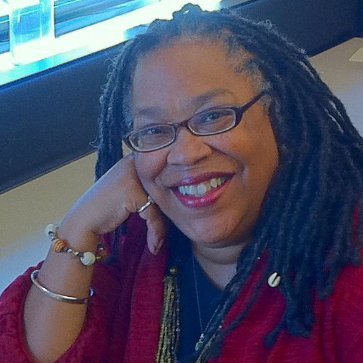 “The name Linda Lockhart (pictured) may not be a familiar one beyond the journalism community. But she deserves to be remembered alongside others who maintained a standard and served the field to the point where Black journalism and Black excellence became synonymous in St. Louis,” Kenya Vaughn wrote Wednesday for the St. Louis American.
“The name Linda Lockhart (pictured) may not be a familiar one beyond the journalism community. But she deserves to be remembered alongside others who maintained a standard and served the field to the point where Black journalism and Black excellence became synonymous in St. Louis,” Kenya Vaughn wrote Wednesday for the St. Louis American.
“The nature of her work was in the often unsung, typically anonymous yet critical element of print (and later digital) journalism – copy editing. Her keen eye helped others in the field keep their best foot forward. Lockhart died on Sunday, May 4.
“Lockhart was so committed to her craft that she left copy editing instructions in an obituary that was released upon her death.
“ ‘A stickler for straight-forward writing and AP style, she did not pass away or transition,’ the obit read. ‘She died on May 4, 2025, of complications associated with cancer,’ Lockhart was 72.
“In her 45-year career journey that included work as a reporter, editor, editorial writer and other positions, Lockhart was as devoted to training up future generations of Black journalists as she was to the AP style guidelines. This was evident through her service as a founding member of the Greater St. Louis Association of Black Journalists (GSLABJ) – now known as NABJ-STL.”
Lockhart told Journal-isms in 2020, “I haven’t attended the most, but I was at the first NABJ convention in 1976 at Texas Southern University in Houston.
“After the founders, there are not many others who are still active who can say that. I know Gayle Pollard Terry and Jeanne Fox-Alston were also there.
“It was a glorious gathering that I will never forget.”
Vaughn continued, “Her commitment was reinforced each year for decades as an instructor for the Minority Journalism Workshop, which expanded the knowledge of the field for hundreds of high school students in the St. Louis area.
“ ‘This is a profound loss not only for those of us who worked alongside Linda, but also for our entire community,’ said Latonya Yarbro, 2025-2026 NABJ-STL President. ‘Ever since the founding of the Greater St. Louis Association of Black Journalists, Linda has been a pivotal part of the chapter’s success.;
“She held many offices with GSLABJ and was a long-time member of the National Association of Black Journalists, where she served as secretary in 1977-78. She also served on the board of the St. Louis Press Club.
“Lockhart was bestowed with a GSLABJ Living Legend Award in 2014 and in 2024 was inducted into the St. Louis Media History Foundation Hall of Fame in the Print category. . . .
A funeral service will be held at 10 a.m. on Saturday, May 10, at Good Shepherd Lutheran Church, 327 Woods Mill Road, Manchester, MO 63011.
In lieu of flowers, a donation may be made to the American Cancer Society or the Trinity Lutheran Church Memorial Fund.
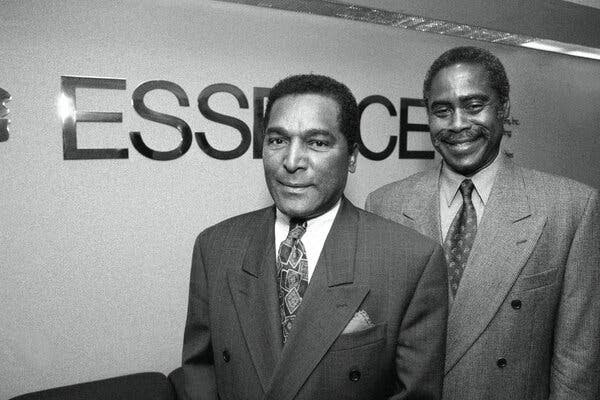
Clarence O. Smith, left, with his business partner Edward Lewis at the Essence offices in Manhattan in 1995. Of the magazine’s four original founders, they were the only ones who remained with the company long afterward. (Credit: Chester Higgins Jr./New York Times)
Clarence O. Smith, Co-Founder of Essence, Was 92
“Clarence O. Smith, who convinced skeptical advertisers of the power and worth of the Black female consumer market in becoming a founder of Essence, the first general-circulation magazine directed at Black women, died on April 21,” Jeré Longman reported Wednesday, updated Thursday, for the New York Times. “He was 92.
“Mr. Smith, who lived in Yonkers, N.Y., died in a hospital after a short illness, his niece Kimberly Fonville Boyd said. She provided no other details.
“Essence began publication as a monthly in May 1970, in an era when negative and sometimes hateful stereotypes of Black women were commonplace, said Edward Lewis, who was one of four founders of Essence and who became its chief executive.
“ ‘We had to overcome this perception,’ he said in an interview. ‘Clarence suggested that we start telling the story of Black women as strivers.’
“Mr. Smith, as the magazine’s president, in charge of advertising and marketing, made the initial pitch to reluctant companies that there were 12 million Black women in the United States who controlled a market worth more than $30 billion, and that the magazine would target 4.2 million of the more affluent among them — women between the ages of 18 and 45 who were urban, educated and had increasing discretionary income. . . .
“ ‘Clarence was a relentless champion for the leadership of Black women and the impact of our spending power that was ignored,’ Susan L. Taylor, the magazine’s editor in chief from 1981 until 2000, said in an interview. . . .
“The seed for Essence began to germinate in November 1968, when a small group of Black professionals — Mr. Lewis, Cecil Hollingsworth and Jonathan Blount, all strangers to one another — met at a Wall Street conference held to encourage African American entrepreneurship. Mr. Smith joined the group two weeks later. . . .
Of the original four founders, Mr. Smith and Mr. Lewis were the only ones who remained with the company long afterward. But their 32-year partnership began to deteriorate in the 1990s over a tangle of issues, personal and professional.
“Their final disagreement, in 2000, was over the sale of 49 percent of Essence to Time Warner. Mr. Smith opposed it. Mr. Lewis wrote in his memoir that it was his belief that Mr. Smith ‘didn’t want to see a viable Black-owned company sell out to whites.’ “
Trump Attacks Law Boosting Web Access to Needy
“President Trump on Thursday attacked a law signed by President Joseph R. Biden Jr. aimed at expanding high-speed internet access, calling the effort ‘racist’ and ‘totally unconstitutional’ and threatening to end it ‘immediately,’ ” Chris Cameron reported Thursday for The New York Times.
“Mr. Trump’s statement was one of the starkest examples yet of his slash-and-burn approach to dismantling the legacy of his immediate predecessor in this term in office. The Digital Equity Act, a little-known effort to improve high-speed internet access in communities with poor access, was tucked into the $1 trillion bipartisan infrastructure bill that Mr. Biden signed into law early in his presidency.
“The act was written to help many different groups, including veterans, older people and disabled and rural communities. But Mr. Trump, using the incendiary language that has been a trademark of his political career, denounced the law on Thursday for also seeking to improve internet access for ethnic and racial minorities, raging in a social media post that it amounted to providing ‘woke handouts based on race.’ . . .
“In reality, the law barely mentions race at all . . . .”
- James Matheson, Baltimore Sun: Van Hollen introduces motion urging reversal of Naval Academy book removal
- Lucille McNamara, Oregonian: Oregon Fights to Keep LGBTQ+, Race, and Disability Books in Libraries Despite Conservative Censorship Efforts
- Sophia Nguyen and Herb Scribner, Washington Post: Trump fires Library of Congress chief Carla Hayden, citing DEI
- Brittany Wong, HuffPost: Chat GPT Was Asked To List Everyone Trump Has Called ‘A Low-IQ Individual’ — And It’s Pretty Racist
Film Makers Say They Identified Journalist’s Killer
“Film makers behind a new documentary on the killing of Al Jazeera Journalist Shireen Abu Akleh by Israeli forces, say they have uncovered the identity of the soldier who killed her, and attempts by the Biden Administration to avoid holding Israel accountable. Al Jazeera’s Ferdia Carr reports on the movie ‘Who Killed Shireen’.”
- Reporters Without Borders: Gaza: RSF condemns the killing of freelance journalist Yahya Sobeih in an Israeli strike
Short Takes
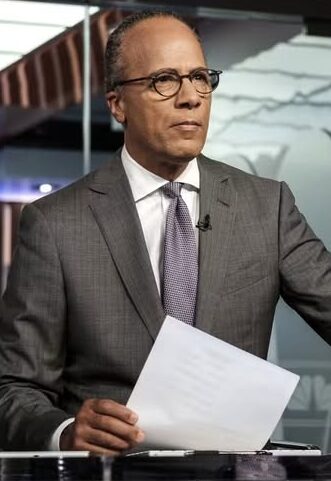 Lester Holt (pictured), who steps away from the “NBC Nightly News” anchor desk on May 30 and plans to increase his presence on “Dateline,” “says the decision behind his exit was the result of long conversations with his wife and top confidants,” Brian Steinberg reported Thursday for Variety. “ ‘It wasn’t like one moment of epiphany,’ he says. ‘I never saw myself doing this job forever.’ Still, he didn’t want to end his journalism career. ‘I decided that I needed to come off the “Nightly” gig, but I still had gas in the tank.’ ”
Lester Holt (pictured), who steps away from the “NBC Nightly News” anchor desk on May 30 and plans to increase his presence on “Dateline,” “says the decision behind his exit was the result of long conversations with his wife and top confidants,” Brian Steinberg reported Thursday for Variety. “ ‘It wasn’t like one moment of epiphany,’ he says. ‘I never saw myself doing this job forever.’ Still, he didn’t want to end his journalism career. ‘I decided that I needed to come off the “Nightly” gig, but I still had gas in the tank.’ ”
- “Tufts University doctoral student Rümeysa Öztürk was released from a Louisiana detention center Friday, six weeks after masked federal agents took her into custody amid the Trump administration’s effort to deport noncitizens who have protested against the war in Gaza,“ Gloria Pazmino, Rebekah Riess and Dalia Faheid reported for CNN. Her arrest came a year after Öztürk co-authored a campus newspaper op-ed that was critical of Tufts University’s response to the war. “Hours after US District Judge William K. Sessions III ordered her immediate release, a smiling Öztürk was surrounded by a group of supporters who chanted ‘Rümeysa! Rümeysa!’ as she walked out of the detention center Friday evening.
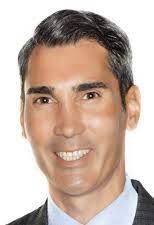 David Plazas (pictured), opinion and engagement director at the Tennessean in Nashville, left on May 2 to start as opinion editor at the Atlanta Journal-Constitution. In a farewell column, Plazas listed as one of his highlights, “Black and Latino Tennessee Voices (2020-Present): This effort emerged from our diversity, equity and inclusion task force − which has hosted gun owners, young American Muslims, and experts in neurodivergence − as a means to go from telling stories about communities of color to telling stories for, with and by them. This project evolved from soliciting more guest opinion columns to curating weekly newsletters then producing annual live shows featuring community members sharing a story about their lives. . . .”
David Plazas (pictured), opinion and engagement director at the Tennessean in Nashville, left on May 2 to start as opinion editor at the Atlanta Journal-Constitution. In a farewell column, Plazas listed as one of his highlights, “Black and Latino Tennessee Voices (2020-Present): This effort emerged from our diversity, equity and inclusion task force − which has hosted gun owners, young American Muslims, and experts in neurodivergence − as a means to go from telling stories about communities of color to telling stories for, with and by them. This project evolved from soliciting more guest opinion columns to curating weekly newsletters then producing annual live shows featuring community members sharing a story about their lives. . . .”
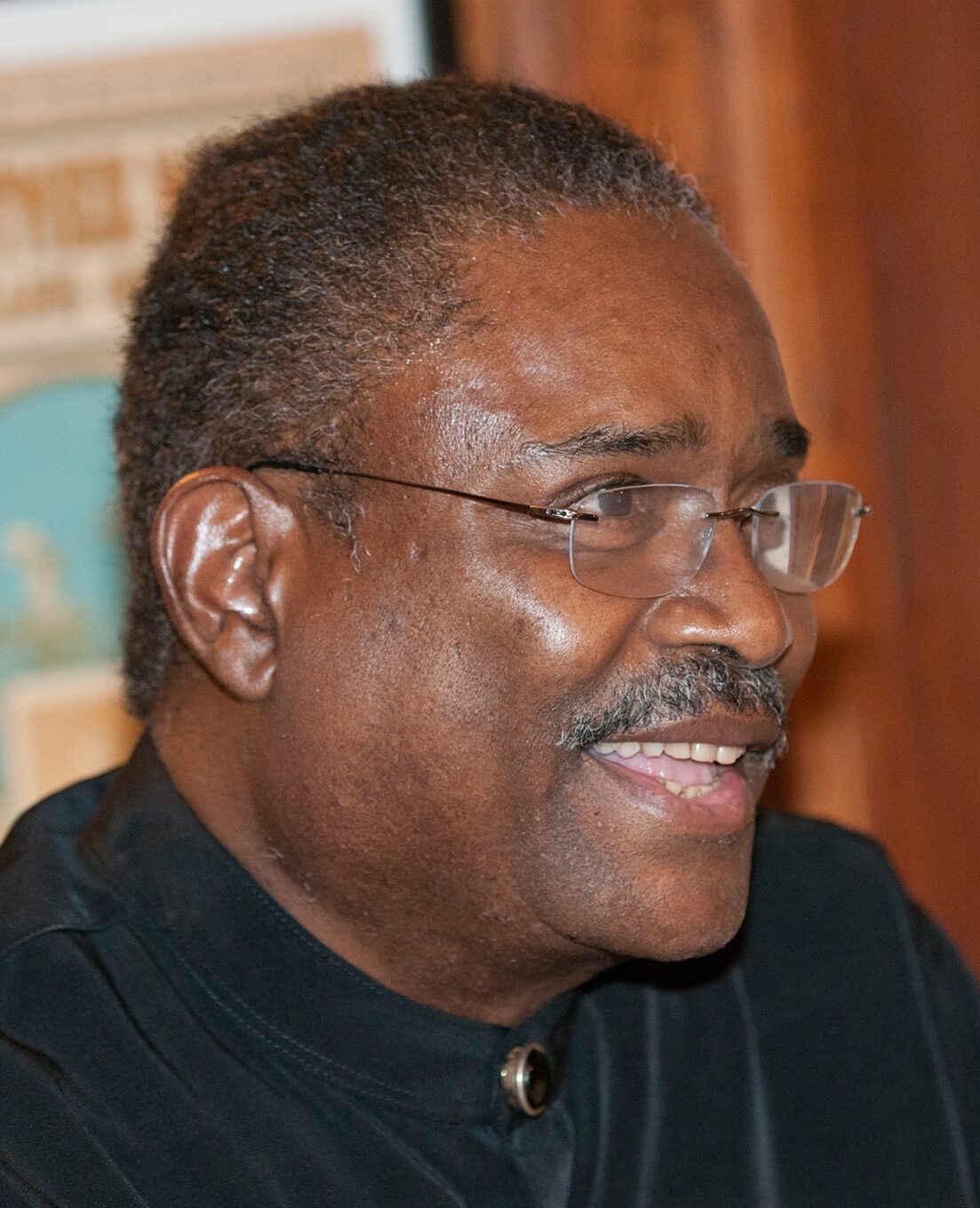 Kenneth Walker (pictured), the veteran journalist whose international outlook led him to live and work for 16 years in South Africa in a career that included work with the Washington Star, NPR, ABC News and the short-lived “USA Today: the Television Show,” received a 1,200-word obituary Friday from Sam Roberts in The New York Times. The headline was, “Kenneth Walker Dies at 73; His Journalism Bared Apartheid’s Brutality.” A memorial service is scheduled for Catholic University in Washington from noon to 4 p.m. Friday, May 23, at Heritage Hall. (Journal-isms Roundtable video)
Kenneth Walker (pictured), the veteran journalist whose international outlook led him to live and work for 16 years in South Africa in a career that included work with the Washington Star, NPR, ABC News and the short-lived “USA Today: the Television Show,” received a 1,200-word obituary Friday from Sam Roberts in The New York Times. The headline was, “Kenneth Walker Dies at 73; His Journalism Bared Apartheid’s Brutality.” A memorial service is scheduled for Catholic University in Washington from noon to 4 p.m. Friday, May 23, at Heritage Hall. (Journal-isms Roundtable video)
- “Stephen A. Smith said the Democratic Party would need to be ‘purged’ before he would run for president under the party,” Lauren Irwin reported Sunday for The Hill. The ESPN personality “joined CNN’s ‘State of the Union’ on Sunday, where host Jake Tapper asked him about the continued talk about him running in the 2028 presidential election. . . . ” Separately, President Trump said of a possible Smith candidacy, ‘“Stephen A. He’s a good guy. He’s a smart guy. I love watching him. He’s got great entertainment skills, which is important. A lot of these democrats I watch have no chance. I’ve been pretty good at picking people and picking candidates, and I will tell you I’d love to see him run,” BlackAmericaWeb.com reported May 2.

- Phil Lewis, president of the Washington Association of Black Journalists, spoke before the Prince George’s County (Md,) Council to implore them to continue to fund CTV, a community-focused news station at risk of being eliminated due to budget cuts. The number of local chapters of the journalists-of-color organizations who have similarly testified in their jurisdictions couldn’t be determined.
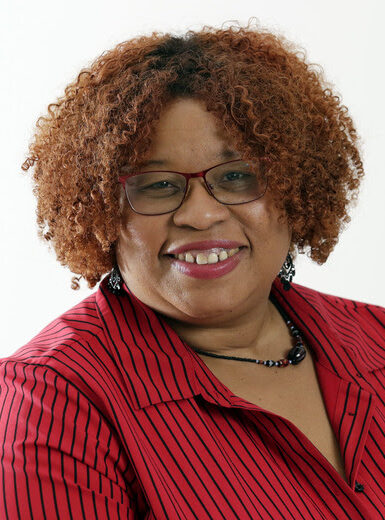 Amanda Barrett (pictured), vice president of news, standards and inclusion at the Associated Press, accepted the Society of Professional Journalists’ 2025 Ethics in Journalism Award. The news cooperative was honored “for refusing to allow the White House to dictate its coverage while continuing to produce accurate and ethical reporting of the Trump administration, despite being denied access to presidential events.”
Amanda Barrett (pictured), vice president of news, standards and inclusion at the Associated Press, accepted the Society of Professional Journalists’ 2025 Ethics in Journalism Award. The news cooperative was honored “for refusing to allow the White House to dictate its coverage while continuing to produce accurate and ethical reporting of the Trump administration, despite being denied access to presidential events.”
- “The Guardian is hiring for more than a dozen new editorial roles to support its U.S. expansion after growing its overall revenue year-over-year by 25%, a source familiar with its plans told Axios,” Sara Fischer reported Tuesday for Axios. “Why it matters: U.K. publications are scrambling to tap into America’s lucrative subscription and advertising markets, but The Guardian has found unprecedented success from reader revenue, or donations . . . . “
- In Colorado, “The majority of people shot and killed by law enforcement in both 2023 and 2024 were white men armed with guns,” according to the data compiled by The Denver Post, Lauren Penington reported Monday for the newspaper. “However, Black Coloradans were overrepresented in the data, which includes information from law enforcement agencies, coroner’s offices and national databases. Nearly 13% of people killed by Colorado law enforcement in 2024 were Black, but Black people make up less than 4% of the state’s population, according to the U.S. Census Bureau. . . .”
- “Hardline House conservatives want Congress to be more hands-off when it comes to fighting antisemitism, arguing that proposed legislation infringes on First Amendment rights,” Punchbowl News reported Tuesday. “Christian conservatives have pushed back on two recent bills dealing with Israel and antisemitism, complicating Republican efforts to accuse Democrats of abandoning Jews. ‘Congress should just stay out of these fights to crack down on free speech,’ Rep. Thomas Massie (R-Ky.) told us. ‘It’s not illegal to be antisemitic.’ ”
(Credit: CBS News)
- “This month marks the 100th birthday of Malcolm X, the charismatic and defiant Black leader who electrified America with his blunt talk on civil rights, before he was assassinated in 1965,” CBS’ “60 Minutes” reported Sunday. “Correspondent Mark Whitaker, author of the new book ‘The Afterlife of Malcolm X,’ looks at how his influence has grown following his death, and how his controversial views and piercing questions about Black identity and racial injustice still resonate in the fractious politics of today.”
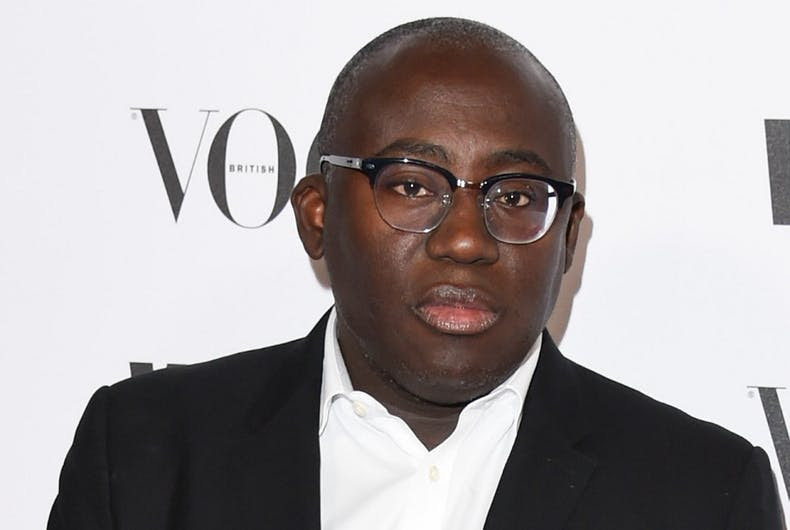 Less than three months after Edward and Akua Enninful announced the launch of a global media and entertainment company called EE72, the siblings have revealed specific details about the venture including a quarterly print publication and a digital platform,” Chris Gardner wrote Thursday for the Hollywood Reporter. . . . The goal, it seems per the launch announcement, is to blend ‘the timeless depth of print with the dynamism of digital’ with coverage of top creative forces, no doubt leaning into Edward Enninful’s (pictured) enviable Rolodex of A-list stars, designers and creators gathered through years spent in the fashion and media space with tenures at British Vogue and as European editorial director of Vogue.
Less than three months after Edward and Akua Enninful announced the launch of a global media and entertainment company called EE72, the siblings have revealed specific details about the venture including a quarterly print publication and a digital platform,” Chris Gardner wrote Thursday for the Hollywood Reporter. . . . The goal, it seems per the launch announcement, is to blend ‘the timeless depth of print with the dynamism of digital’ with coverage of top creative forces, no doubt leaning into Edward Enninful’s (pictured) enviable Rolodex of A-list stars, designers and creators gathered through years spent in the fashion and media space with tenures at British Vogue and as European editorial director of Vogue.
To subscribe at no cost, please send an email to journal-isms+subscribe@groups.io and say who you are.
Facebook users: “Like” “Richard Prince’s Journal-isms” on Facebook.
Follow Richard Prince on Twitter @princeeditor
Richard Prince’s Journal-isms originates from Washington. It began in print before most of us knew what the internet was, and it would like to be referred to as a “column.” Any views expressed in the column are those of the person or organization quoted and not those of any other entity. Send tips, comments and concerns to Richard Prince at journal-isms+owner@
View previous columns (after Feb. 13, 2016).
View previous columns (before Feb. 13, 2016)
- Diversity’s Greatest Hits, 2018 (Jan. 4, 2019)
- Book Notes: Is Taking a Knee Really All That? (Dec. 20, 2018)
- Book Notes: Challenging ’45’ and Proudly Telling the Story (Dec. 18, 2018)
- Book Notes: Get Down With the Legends! (Dec. 11, 2018)
- Journalist Richard Prince w/Joe Madison (Sirius XM, April 18, 2018) (podcast)
- Richard Prince (journalist) (Wikipedia entry)
- February 2018 Podcast: Richard “Dick” Prince on the need for newsroom diversity (Gabriel Greschler, Student Press Law Center, Feb. 26, 2018)
- An advocate for diversity in the media is still pressing for representation, (Courtland Milloy, Washington Post, Nov. 28, 2017)
- Morgan Global Journalism Review: Journal-isms Journeys On (Aug. 31, 2017)
- Journal-isms’ Richard Prince Wants Your Ideas (FishbowlDC, Feb. 26, 2016)
-
Richard Prince with Charlayne Hunter-Gault, “PBS NewsHour,” “What stagnant diversity means for America’s newsrooms” (Dec. 15, 2015)
- Book Notes: Journalists Follow Their Passions
- Book Notes: Journalists Who Rocked Their World

